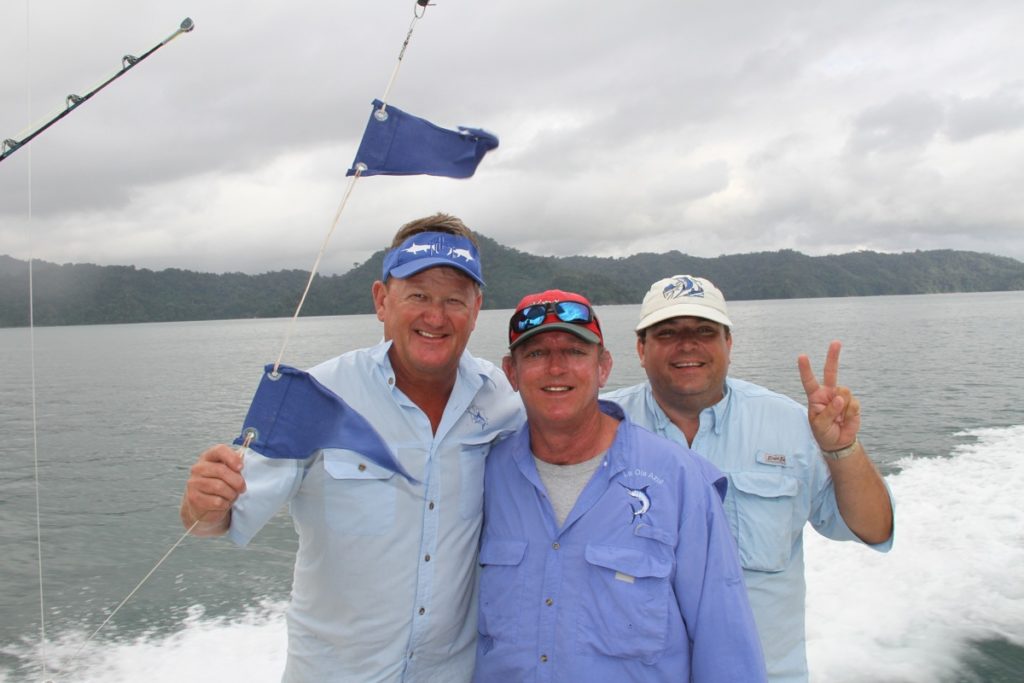I returned over Thanksgiving for one of the 50th Anniversary Celebrations, the Tropic Star Torneo with my team from the Cayman Islands. The lodge and beautiful grounds were immaculate as always. It was great to be back at my second home. There had been some changes in staff, but everything was running very smoothly, and life was definitely back to normal. Many of the boats had been refurbished, and the staff were putting the finishing touches on the building in the middle of the dock.
Looking back, 2013 proved another great year of fishing for Tropic Star Lodge. Terri and Mike Andrews and their staff have worked extremely hard to maintain the very high standards set by the lodge for the last 50 years. I have been going there for 22 years, but I had not been for the last two years. I have spent a lot of time recently on shark research projects in Bermuda, Mexico and in the Bahamas which ate up my fishing time.
However the weekly catch reports and photos published by the fishing director, Albert Battoo, are like a carrot to TSL clients, most of whom are repeat customers. They know that Tropic Star Lodge is the best big-game fishing location in the western hemisphere, and they return time and time again, just like I do. They were back in force for the torneo and the start of the new season.
Sebastien Guilbard and I went from the Air Panama flight from Panama City landing at Piñas Bay straight to the dock, jumped on board the Miss Texas and were off to sea within minutes of arriving. Fellow torneo anglers from Canada — Mike Kelly, Dave McBain and Greg Speers — plus a cohort of other Canadian regulars also hit the calm seas for a warm-up day of spectacular offshore fishing.
The weather was beautiful, with cloud-capped mountains in the background. Birds and bait were everywhere. Offshore, we found a wonderful trash line with lots of big logs and of course mucho dorado! We caught four good ones before a 300-pound blue showed up on the left long, tracking it for what seemed like forever, then spurning a fresh dorado belly strip before turning away. It crashed the right-long lure 30 seconds later, and we had a couple of great jumps before the hook came out. Great start!
There were more big logs, and our skipper Gavilan found one with lots of juvenile bonito near it. We set up with live bait and promptly scored two more big dorado. I was tight on one dolphin when a blue marlin came up and chased the bait on the right rigger out of the water — what a sight! It seemed hesitant and then committed to the bite but dropped the bait shortly afterward. Gads! Who could resist such tempting morsel! In one hour we were zero for two!
Later that afternoon Gavilan spotted an area of foaming activity** —** tunas and dolphins again? No way! As we got closer, I could see it was a school of about a hundred blacktip sharks and a thousand or more jack crevalle tearing up a bait ball of cavajitas or green jacks. Bait balls in Panama are usually created by a yellowfin tuna/spotted dolphin combination. None of these species were involved, just sharks and jacks. Of course I did not have my dive gear or my underwater camera. Aaaaaaargh! It was the first time in dozens of expeditions to the eastern Pacific that I had seen this combination at work on baitfish. We stopped by the white water and watched them feast until they charged down the last bait.
The party broke up and the predators all went on their way 10 minutes later, leaving a wide slick of calm water where we’d watched the turmoil moments before. I am always learning something new in the ocean.
For our second day out, we got some live bonitos for bait at the Piñas Reef before heading offshore to the hundred-fathom line. Gavilan found us a blue in quick order, and Sebastien settled down to fight a 500-pound blue marlin that did not jump. We had leader in 20 minutes, sending the big girl on her way.
We then stayed with a school of spotted dolphin for most of the day, and caught a variety of dorado and skipjack as well as a the only sailfish we saw for the trip. Later that afternoon, we shadowed another lodge boat with angler Jim Nagy hooked up a 400-pound blue next to us. We stayed to watch the release. The marlin went ballistic on the leader. What a dramatic display by this acrobatic blue! I love capturing boat to boat action like this when such opportunities come along.
The two-day torneo began in earnest on Saturday, with nine private boats from Panama City making the trip down and eight lodge boats fishing. Unfortunately the water conditions had changed, the current slacked off and the bait fish were gone! Only four marlin were caught by the fleet all day, but two blues were caught by the team from Australia on the Australia with Capt Candelo. So they jumped into first place. Cayman team members Sebastien Guilbard, John Crimmins and myself, fished with captain Masso on the Spain and didn’t see a billfish all day.
The last day was wide open; anyone could win, but again, it was off to a slow start. We had drawn Australia with Candelo, who’d caught two blues the previous day. We quickly got live bonito on the reef and headed out to the hundred-fathom line. Here we saw some fast moving schools of skipjacks and not much else. Candela pulled lures for the first two hours and then ran another five miles to find a bigger school of skipjack and other boats working the area. There had been several marlin bites on lures but just one blue caught all morning.
Just a couple of minutes after noon, a 300-pound blue crashed the right rigger lure and danced its way across the wake before I could even lift my camera up to get the shot. I stood mesmerized. This is what it’s all about! The blue reversed direction and charged off to the right, grey-hounding all the way, and then ran out of gas. John did great work and we had the leader in the next 15 minutes, removing the hook and setting her free. We were on the board!
Out went the lures, and we had just got the pattern organized when a big fish slid up behind the right teaser. The dorsal looked like a periscope it was so tall. I fired out a small dead bonito, and the shadow sat there looking at it and then flipped its tail, dorsal up and bill out, mouth wide open and coming on the skipping bait as if in slow motion. The bow wave from the broad head pushed the bait aside and the marlin missed in a cloud of spray. My legs were shaking. This fish was over 700 pounds.
It came up a second time and got the bonito, and I came tight after a two-second drop-back. She pushed her head out, shaking, and went jet-skiing away across the surface. Then she went down for several minutes. I did not know how long this fight would last on 50# line so was ready for the long haul.
The big marlin popped back up and we spun around and chased her down, getting close right away. I could see her massive form gliding along with her pectorals spread wide, vivid electric-blue stripes down her body and massive tail weaving back and forth. She darted away with a couple of lazy sweeps of that blue tail but we got back over her and the leader was there right away and touched the rod tip. We had two releases in 30 minutes to propel us from the outhouse to second place.
She then took off again half out of the water going to the right leaving a boat wake behind her. I could not see her full length until we had her on the leader again, and Candelo said the marlin was 750 to 800 pounds. She was released, colors glowing, and dashed off like a jet ski on steroids with a final series of jumps. We had two and half hours left to fish but did not raise another billfish. The Australians survived our late charge to take top team and Cayman Islands came second, with the Panama City boat Pescalo placing third. An amazing statistic was that Candelo on “Australia” caught four of the seven marlin caught in the two day event. On the last day out of 20 recorded strikes from the fleet, three blue marlin were released.
Tropic Star Lodge has just celebrated its 50th anniversary and is looking forward to another half century of world-class big-game fishing action. If you’ve never been there, then you need to book soon. If you have been, you need to return soon. The marlin fishing is good year round with peaks January through March and again August through September. The average size of the blue marlin and black marlin is 300 pounds, but 500-pounders are common. The inshore fishing can be spectacular, and the hospitality, in my second home, is simply the best. Good luck and tight lines.
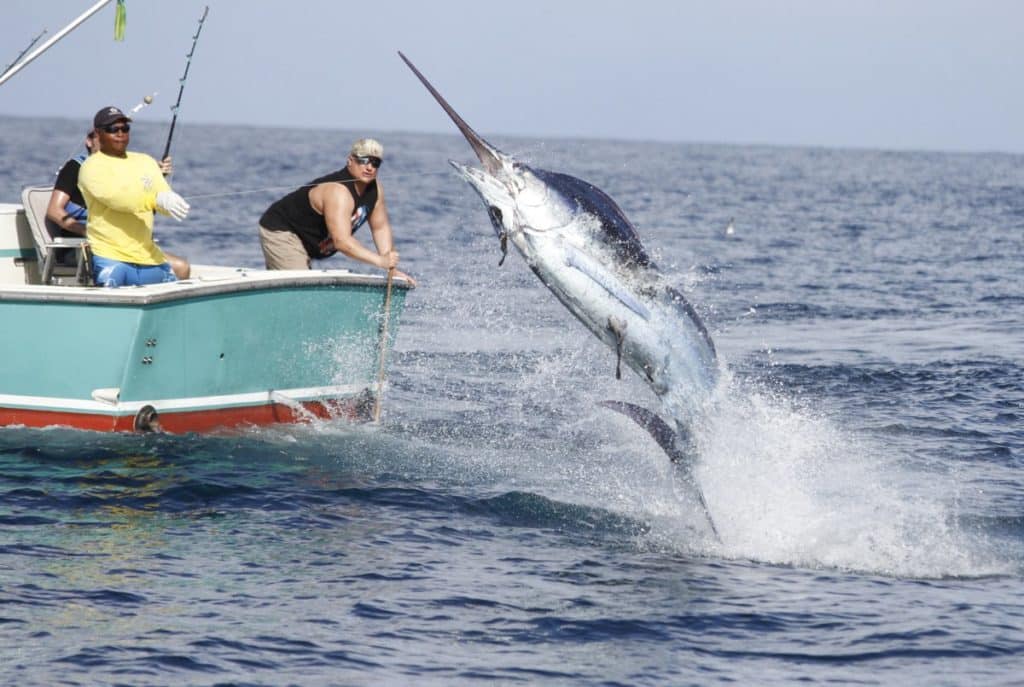
A 400-pound blue on the wire!
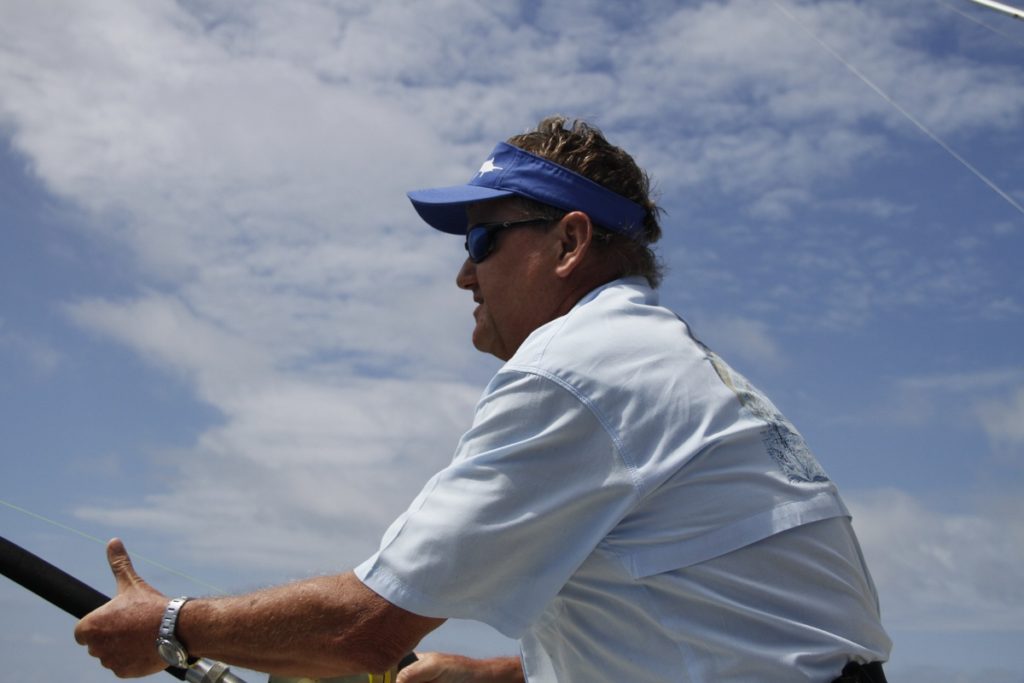
Get Ready … Get Set …!
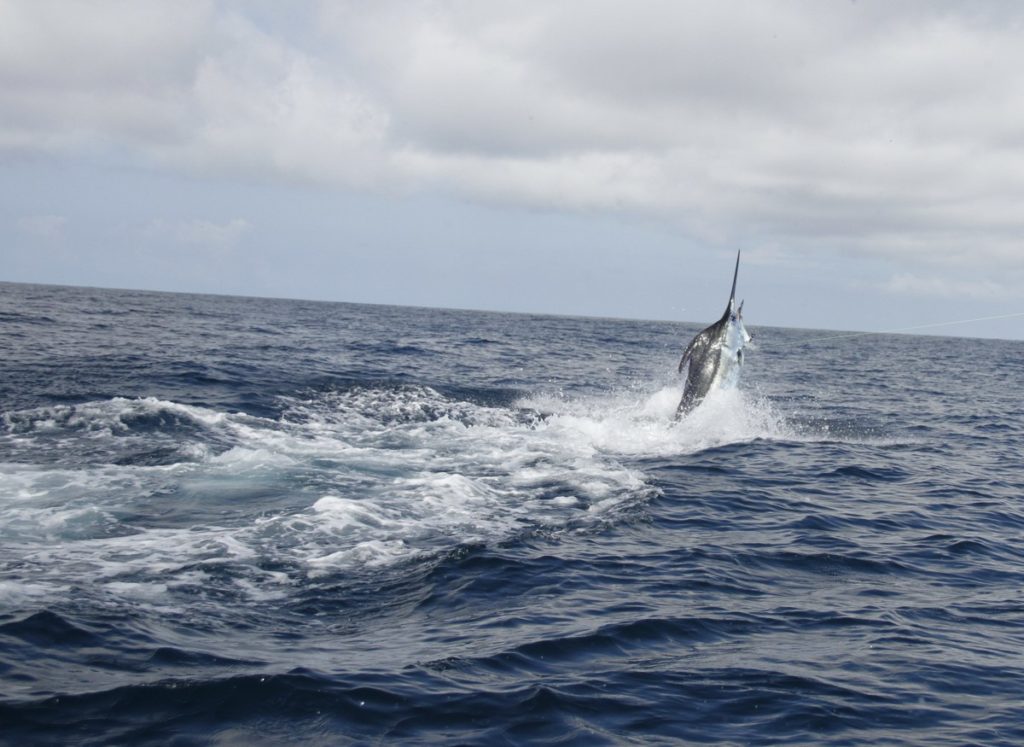
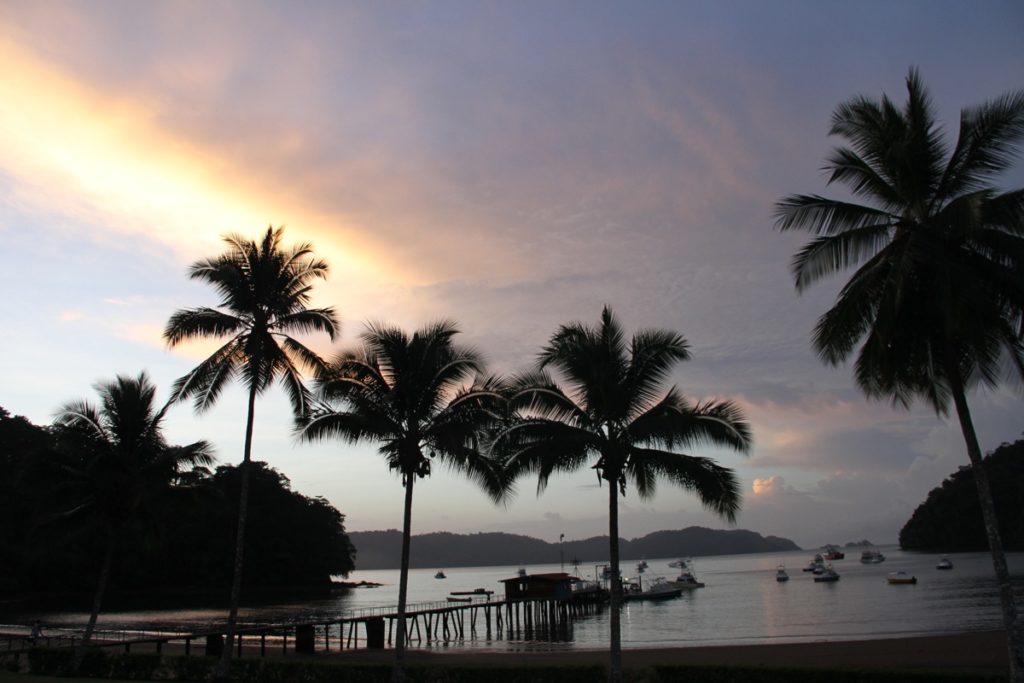
Early Start
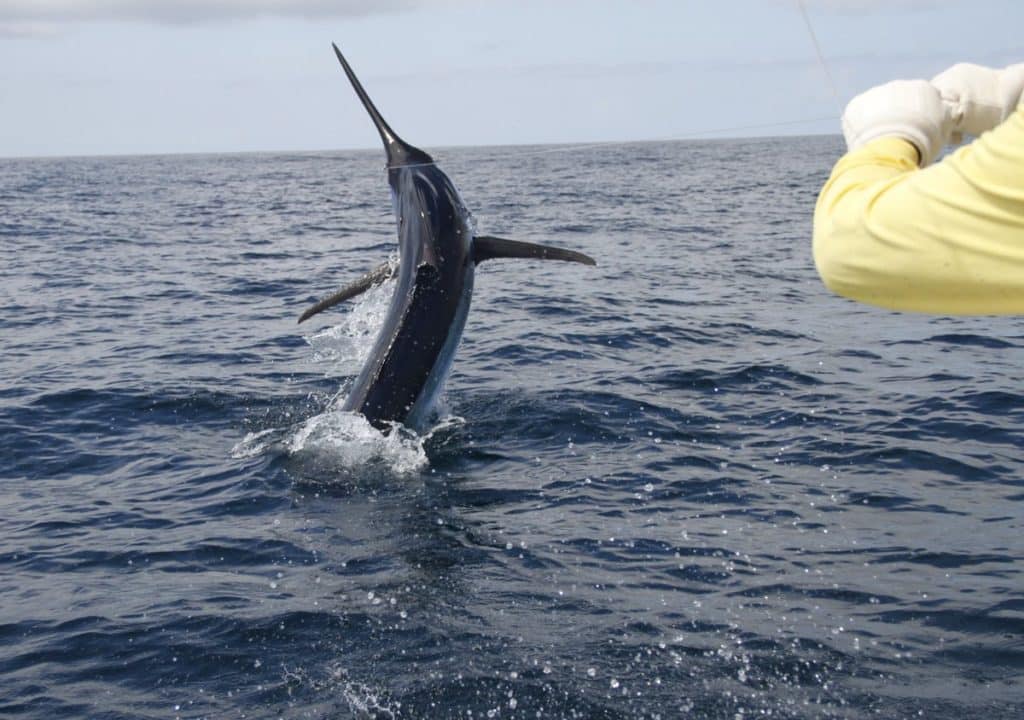
Tight-Wire Act
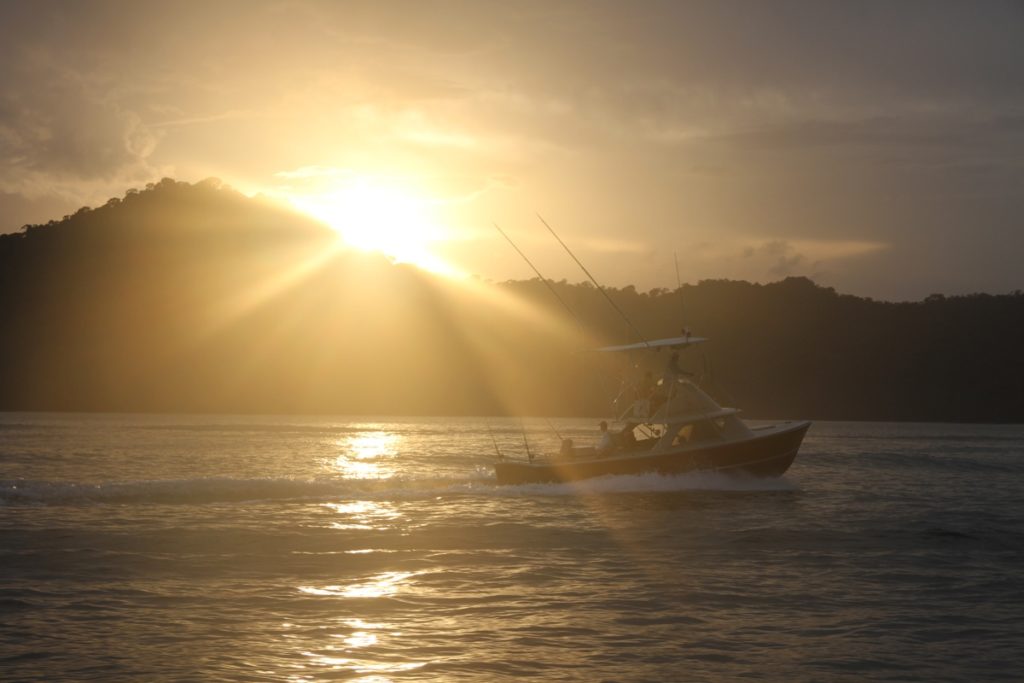
The Spectacular Coast of Panama
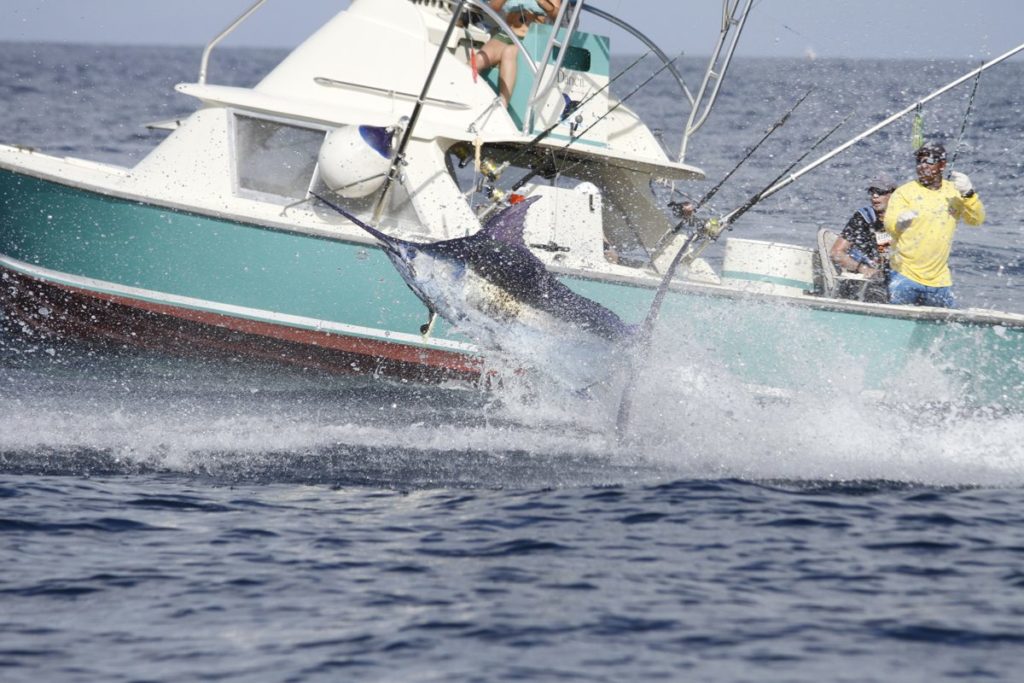
Explosive Power
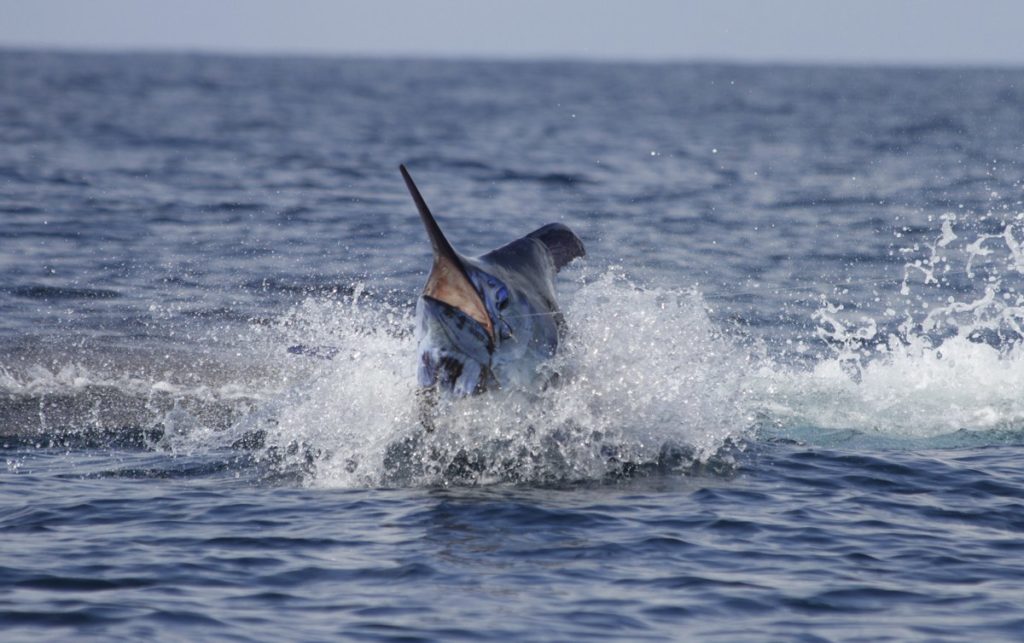
Raging Blue
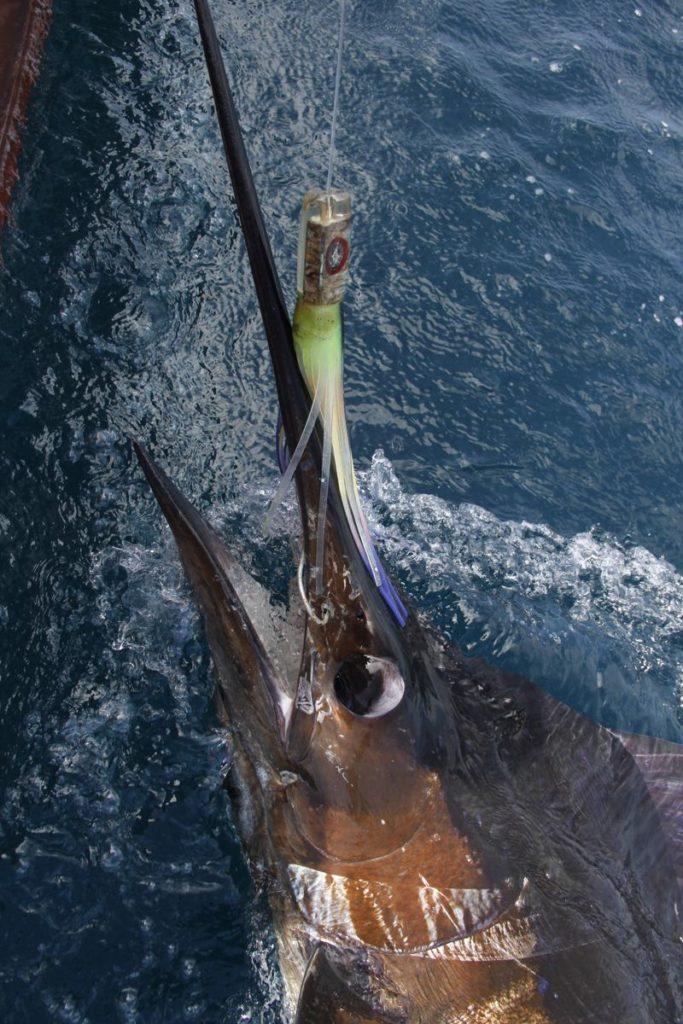
Ready for Release
